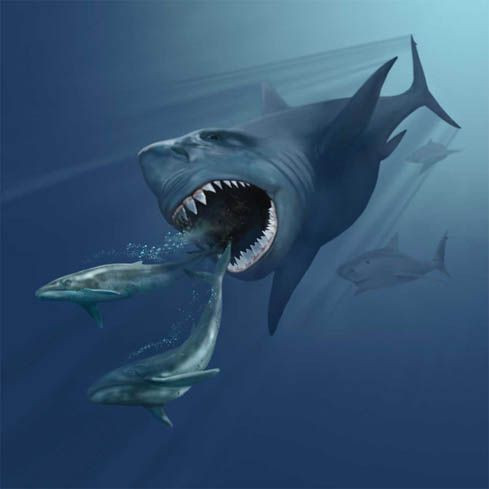Megalodon Shark Extinction May Have Triggered Gigantism In Modern Whales

The infamous megalodon, the world’s largest-ever shark, grew to 20 meters (60 feet) in length, weighed as much as three African elephants, had teeth measuring over 7 inches long and munched on whales like they were goldfish crackers. And then it disappeared. Exactly when the prehistoric monster vanished has long eluded scientists, but new research sheds light on the shark’s demise, including that the species died off around the same time that whales began growing to gigantic sizes.
The timetable for megalodon’s existence has been debated, but according to a new study published in the journal PLOS One, the shark went extinct around 2.6 million years ago, long before early humans were around. "When we found out when that happened, we noticed it coincided with the pattern mentioned in whales,” co-author Catalina Pimiento, from the Florida Museum of Natural History in Gainesville, Florida, told the BBC. “Now we need to find out if one event - Megalodon's extinction - caused the other - evolution of gigantism in whales."
The finding contradicts previous research that said megalodon disappeared much later. It also undermines a controversial documentary by the Discovery Channel last year that seemed to suggest that megalodon could still be lurking around in the deep. The network defended its decision to air the documentary, titled “Megalodon,” which many viewers criticized as being a spoof, by posing the question: “With 95 percent of the ocean unexplored, who really knows?"
Despite the network’s exaggerated claims about megalodon, scientists maintain that the shark is indeed long-gone. Its disappearance may have paved the way for some of Earth’s largest animals, researchers say, including the blue whale, which can grow to more than 30 meters (100 feet) long.
While scientists lack conclusive evidence that megalodons dined exclusively on whales, whale fossils are often found along with megalodon teeth, according to the study’s authors. “This has led to the hypothesis that they interacted in ancient marine communities,” researchers noted.
Researchers used a technique called Optimal Linear Estimation to determine when megalodon went extinct. The statistical approach uses the time between the dates of fossils of megalodon to infer a date at which the species could be considered wiped out. “Our analysis suggests that the extinction of [megalodon] most likely occurred around Pliocene–Pleistocene boundary,” researchers concluded.
© Copyright IBTimes 2024. All rights reserved.






















